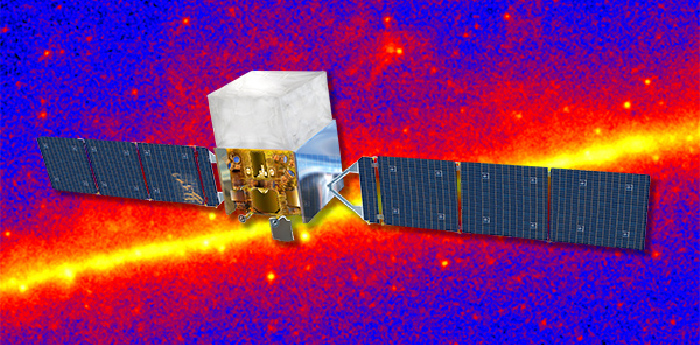Fermi Satellite

NASA's Fermi Gamma-Ray Space Telescope, launched in 2008, is the largest gamma-ray detector in space. Its two instruments, called the Large Area Telescope (LAT) and the Gamma-ray Burst Monitor (GBM) show us the gamma-ray sky in greater detail than ever before.
The LAT detects photons with energies ranging from 20 million electron volts to over 300 billion electron volts. For comparison, visible light ranges from about 2 to 3 electron volts. The high end of the LAT energy range was poorly explored before Fermi. When operating in survey mode, Fermi's instruments scan the entire sky every three hours, providing fast snapshots that let scientists monitor rapidly changing sources.
The spacecraft's secondary instrument, the GBM, is designed to spot high-energy blasts known as gamma-ray bursts. These occur when massive stars die or when orbiting neutron stars spiral together and merge. The GBM is sensitive to lower-energy gamma rays than the LAT. Bursts seen by both instruments provide an unprecedented look across a broad gamma-ray spectrum, enabling scientists to peer into the processes powering these events.
Originally known as the Gamma-ray Large Area Space Telescope, or GLAST, the Fermi spacecraft was named for Enrico Fermi after its launch. He was the first to suggest a viable astrophysical mechanism for particle acceleration, and his work laid the foundation for our understanding of many types of sources studied by NASA's Fermi mission.
Explore further:
- NASA's Fermi Celebrates Five Years in Space, Enters Extended Mission
- NASA Renames Observatory for Fermi, Reveals Entire Gamma-Ray Sky
- Seeing in gamma rays
- GLAST Has Eyes for Gamma rays
- Imagine the Universe: Satellite Showcase about Fermi
- Imagine the Universe: Gamma-ray Telescopes
- NASA's Fermi Gamma-ray Space Telescope Mission